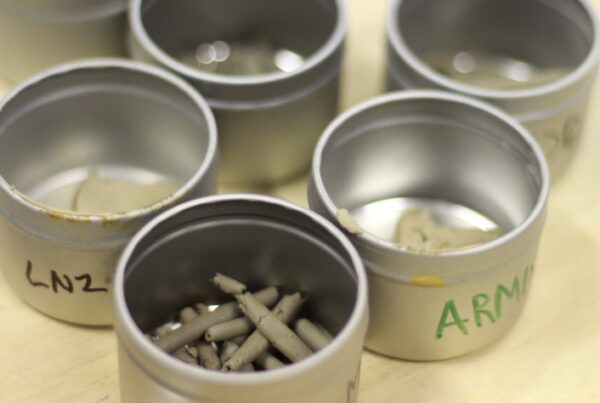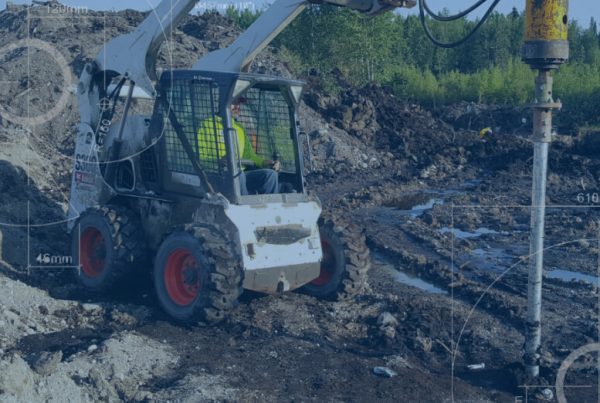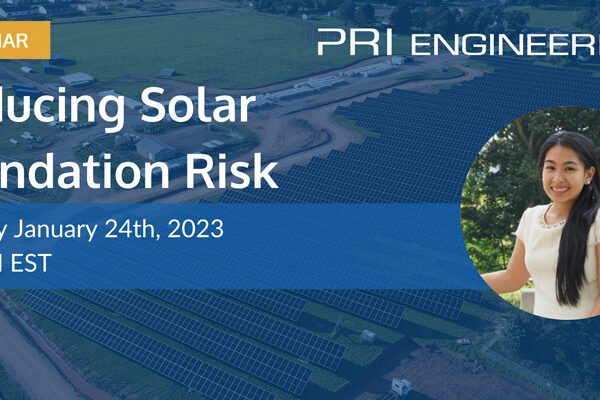What is the Sunbank Solar Project?
The Sunbank Solar Project is a large-scale solar energy and battery storage facility site located near the City of Summerside, PEI. PRI Engineering was responsible for the solar foundation design of this project. The community microgrid will have a capacity of 26.2 MWDC of solar power and include a 10 MW/20 MWh battery storage system. Upon completion of the solar project, it is expected that imports of electricity will fall from 58% to 38%. Furthermore, the annual greenhouse gas emissions reduction is equivalent to 8,128 tonnes or roughly 1,750 cars. This renewable energy project puts Canada one step closer to reaching net zero emissions by 2050 as outlined in the Paris Agreement.
How the Sunbank Solar Project Got Started
The City of Summerside struck an agreement with Samsung Renewable Energy to push its renewable energy agenda forward. Summerside was an early adopter of clean energy technologies and has slowly become a leader in energy transition to neighboring municipalities. Approximately 19% of Canada’s energy comes from renewable sources with the City of Summerside being a leading example of a clean energy adopter. (The Summerside Sunbank Project, 2020). When Summerside decided to add an additional 10 MW of battery storage and a 26.2 MWdc solar farm to their existing clean technology platform, Samsung was there to support their mutual goals of maximizing energy efficiency and reducing carbon emissions.
In the project planning phase, the EPC Contractor, Aspin Kemp & Associates (AKA), sought out PRI Engineering for their expertise in structural foundation design. This partnership has lasted through planning, design, and now into construction. “From AKA’s perspective, the early involvement of PRI Engineering is paying dividends during construction.” Says Tom St. Onge, Project Manager for AKA.
What Design Lessons Were Learned from the Montana and the Donoe Solar Projects
The PRI team discovered that the Sunbank site was very similar to two other large sites in Montana and Donoe, USVI, they had previously worked on. Augerable bedrock, which is a layer of sedimentary rock that includes shale and sandstone, was discovered under the surface level of the site.This type of bedrock is typically a hard surface that may not be easily penetrable by various foundations, specifically helical piles.
“It was a nice little surprise for us to be able to apply knowledge learned from completed projects,” says Arash Yazdani, Director of Engineering Services at PRI Engineering, a geotechnical engineering services in the USA and Canada. “We encountered a bedrock which had similar characteristics to what we encountered at the Montana and Donoe solar sites. It posed a challenge then, but now we knew exactly how we would reconcile these complications.”
Applying the lessons learned from the previous projects, PRI proposed driven piles as a solution to penetrate the layer of augerable bedrock. The team tested the constructability of the driven round hollow structural section (HSS) as well as a w-section driven foundation and determined the driven round HSS approach was the most efficient and economical solution.
Step-by-Step Testing Process for Solar Foundation Design
The team at PRI was onboarded to oversee the pre-production load testing and pile design development program. Through an Axial Pre-Production Test, PRI assessed the quality of the soil, analyzing the materials and components to ensure the foundation product would be congruent with the ground. To assess the piles that would be installed on-site, the team carried out tests that replicated stresses that could be caused by heavy snow, wind loads and frost uplift. Specifically, the work program consisted of:
- A Preliminary Desktop and Site Review
This review assessed site access and problematic areas. Additionally, geological mapping was used to further observe superficial depositions, bedrock formations, and groundwater conditions in the surrounding areas. The preliminary site review also surveyed the topography of the site, focusing on ground slopes and watercourses. - Site Visit
Once the preliminary review had been completed, PRI’s Geotechnical Field Specialist inspected a more detailed checklist of items that assess the impact of certain features on the site. For example, breadth of tree coverage, soil type at the surface, and occurrences of steep slopes were some of the site features observed. - Pre-production Load Testing for the Selected Preliminary Test Piles to be Installed On-site
A preliminary Geotechnical Investigation Report (completed by others) cited the possibility of encountering weathered sandstone bedrock at approximately 1.85m to 4.22m below ground surface level. Driven piles were selected over ground-screws and bedrock micropiles, for the pre-production load testing program, due to the soft nature of the underlying bedrock. The final embedment depth varied based on subsurface conditions from 4.0 m to 4.5 m. - Construction Quality Assurance and Production Load Testing
Quality control that has been approved by PRI is being undertaken by the contractor. PRI will complete periodic quality assurance inspections and complete production testing to ensure the foundation is in general conformance with the design.
Economic and Environmental Impact of Clean Energy for Summerside, PEI
The Sunbank Solar Project has significant environmental and economic benefits for the community that set it apart as a leading jurisdiction for environmental change. With the addition of the microgrid and battery storage, the City of Summerside will be obtaining 62% of its energy from clean sources, wind and solar. Additionally, C02 levels will be cut by 21,000 tonnes annually. Summerside is well on its way to becoming a fully clean energy community from the Sunbank Solar Project and its other sustainability initiatives.
This energy transition also sets the stage for continued economic growth. Long-term forecasts estimate an increase in annual tax revenue . With these additional savings, more can be distributed to public services such as shelter services, transportation, and health and personal care. An additional 200 full-time jobs and $3.8 million in annual provincial revenue are expected to result from the Sunbank Solar Project.
The City of Summerside is revolutionizing how cities and other jurisdictions can play an active role in combatting climate change. Energy savings, economic development opportunities, and offsetting carbon emissions are examples of significant impacts this project is making. The team at PRI is proud to be part of this initiative and acknowledge the efforts of Summerside and PEI as renewable energy leaders.
References
Economic Development City of Summerside. (2020). The Summerside Sunbank Project: A Utility Scale Solar / Battery Generation Project. (1-13).



